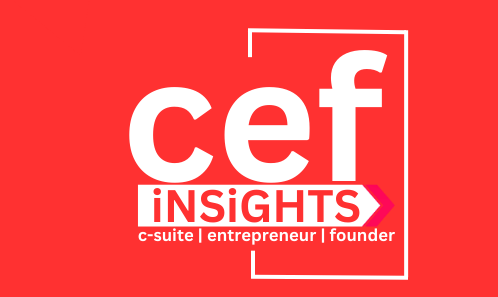Keywords: AI and IoT
Introduction
The United States, with its rich history of technological innovation, is at the forefront of harnessing the potential of AI and IoT. In this article, we will explore the current state of AI and IoT in the US tech landscape, their applications across various industries, the challenges they face, and the promising future they hold.
1. Understanding AI and IoT
a. What is Artificial Intelligence (AI)?
Artificial Intelligence refers to the simulation of human intelligence in machines that are programmed to think and learn like humans. AI systems can analyze data, recognize patterns, make decisions, and continuously improve their performance. Machine learning and deep learning are subsets of AI that have garnered significant attention in recent years.
AI’s potential in the US tech landscape is boundless. From improving healthcare with diagnostic algorithms to revolutionizing transportation with autonomous vehicles, AI has already made its mark in various sectors.
b. What is the Internet of Things (IoT)?
The Internet of Things encompasses a network of physical objects, or “things,” embedded with sensors, software, and connectivity, enabling them to collect and exchange data over the Internet. These objects can range from everyday devices like thermostats and refrigerators to complex machinery in industrial settings.
IoT’s impact is far-reaching, enhancing efficiency and convenience in our daily lives while transforming industries such as manufacturing, agriculture, and smart cities.
2. The Current State of AI and IoT in the US
a. Pervasive Adoption of AI
AI adoption in the United States has surged in recent years. Tech giants like Google, Amazon, and Microsoft have heavily invested in AI research and development. The US government has also recognized the significance of AI, with initiatives and funding aimed at advancing AI technologies.
In healthcare, AI is aiding in early disease detection, drug discovery, and personalized treatment plans. In finance, AI algorithms are improving fraud detection and optimizing trading strategies. Furthermore, AI-powered virtual assistants like Siri and Alexa have become ubiquitous.
b. IoT’s Influence Across Industries
IoT adoption is equally prevalent, with businesses across various sectors capitalizing on its capabilities. In agriculture, IoT sensors monitor soil conditions and crop health, enabling precision farming. In manufacturing, IoT-driven predictive maintenance minimizes equipment downtime. Smart cities are leveraging IoT to enhance urban living through efficient energy use, traffic management, and waste disposal.
The convergence of AI and IoT is particularly noteworthy, as AI algorithms can analyze the vast amount of data generated by IoT devices, extracting valuable insights and enabling smarter decision-making.
3. Applications of AI and IoT
a. Healthcare Revolution
AI and IoT are revolutionizing healthcare in the US. Telemedicine platforms equipped with AI-driven diagnostic tools have made healthcare accessible to remote areas. Wearable IoT devices continuously monitor patients’ vital signs and send real-time data to healthcare providers, allowing for early intervention. AI-powered chatbots provide instant medical advice.
b. Smart Transportation
The transportation sector is experiencing a paradigm shift, thanks to AI and IoT. Autonomous vehicles, equipped with sensors and AI algorithms, promise safer and more efficient transportation. Traffic management systems use IoT data to optimize routes and reduce congestion. Electric vehicles are becoming mainstream, supported by AI-driven battery management systems.
c. Industrial Transformation
Manufacturing and Industry 4.0 are embracing AI and IoT technologies. Smart factories use IoT sensors to monitor machinery performance, predict maintenance needs, and reduce downtime. Robots equipped with AI are increasingly employed for tasks such as quality control and material handling. Predictive analytics improve supply chain efficiency.
d. Sustainable Agriculture
In agriculture, AI and IoT are addressing the challenges of food security and sustainability. IoT devices monitor soil moisture, nutrient levels, and weather conditions, enabling farmers to optimize irrigation and fertilization. AI-powered drones provide aerial views of crops, detecting diseases and pest infestations. Precision agriculture techniques increase yields while reducing resource usage.
4. Challenges and Concerns
a. Data Privacy and Security
The proliferation of IoT devices has raised concerns about data privacy and security. With numerous devices collecting and transmitting data, there is a risk of unauthorized access and data breaches. Addressing these challenges is crucial to maintaining public trust and ensuring the responsible use of technology.
b. Ethical AI
AI algorithms can inherit biases present in training data, leading to unfair or discriminatory outcomes. Ensuring ethical AI development and mitigating bias is a pressing concern. Transparent and accountable AI systems are essential to building trust and avoiding unintended consequences.
c. Workforce Disruption
While AI and IoT bring efficiency gains, they also raise concerns about job displacement. Automation of routine tasks may lead to workforce disruption, requiring a concerted effort to retrain and upskill the workforce for the jobs of the future.
5. The Future of AI and IoT in the US Tech Landscape
a. Continued Innovation
The US tech landscape will continue to witness groundbreaking innovations in AI and IoT. Quantum computing, a nascent technology, has the potential to supercharge AI algorithms, solving complex problems that were previously infeasible. Advancements in edge computing will enable real-time AI processing on IoT devices, reducing latency and enhancing efficiency.
b. AI and IoT in Edge Computing
Edge computing, a decentralized approach to data processing, will see greater integration with AI and IoT. This will enable AI algorithms to process data closer to the source, reducing the need for data to travel long distances to the cloud. Edge AI will find applications in autonomous vehicles, smart homes, and industrial automation.
c. Ethical AI Regulations
To address ethical concerns, the US is likely to enact regulations governing AI development and deployment. These regulations will emphasize transparency, accountability, and fairness. Companies will need to adhere to ethical AI practices to avoid legal and reputational risks.
Conclusion
In the United States, the synergy between AI and IoT is reshaping industries, enhancing healthcare, optimizing transportation, and promoting sustainability in agriculture. While challenges such as data privacy and ethical concerns persist, ongoing innovations and regulations will shape a future where AI and IoT coexist responsibly. As technology continues to advance, unlocking the full potential of AI and IoT in the US tech landscape will be a journey filled with promise and opportunity. Embracing these transformative technologies will be key to staying at the forefront of global innovation.
Also Read: US Business Networking Events













